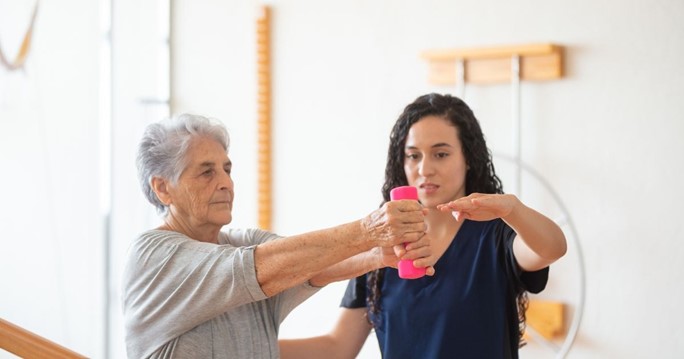Where to Get Shockwave Therapy Near You: What to Look For & What to Expect
Looking for where to get shockwave therapy? Discover top-rated clinics, what to expect during treatment, and how to choose the right provider for faster pain relief.
Pain that lingers can wear you down.
Maybe you’ve tried physical therapy, rest, painkillers, and even injections, but nothing sticks.
That’s where shockwave therapy starts entering the conversation.
But here’s the catch: it’s not just about what it is—it’s about where you get it.
Typing “where to get shockwave therapy near you” into Google might give you a list, but that list won’t tell you who actually gets results.
Or who uses outdated machines.
Or who rushes patients through appointments like it’s a fast-food drive-thru.
That’s where this guide comes in.
We’ll walk through what makes shockwave therapy work, how to spot clinics worth your time and money, and why Physis Physical Therapy is setting the standard in Midtown and beyond.
What Is Shockwave Therapy, Really?
Let’s cut through the hype.
Shockwave therapy is a non-invasive treatment that uses high-energy acoustic waves to stimulate your body’s natural healing process.
These pulses go deep into injured tissue and help break up scar tissue, reduce inflammation, and boost circulation—all of which can help relieve chronic pain that hasn’t responded to other treatments.
It’s commonly used for:
- Plantar fasciitis
- Tennis elbow
- Shoulder calcification
- Achilles tendinopathy
- Hip bursitis
- Patellar tendonitis (jumper’s knee)
- Trigger points and myofascial pain
And more recently, it’s been gaining traction with recovery and performance in athletic rehab.
But not all results are the same.
And not all providers use the same machines or protocols.
That’s why “where” matters as much as “what.”

Who Should Consider Shockwave Therapy?
Not everyone needs shockwave therapy, and not every injury responds to it.
It’s best suited for people who:
- Have been dealing with chronic pain for 3+ months
- Tried other conservative treatments (ice, PT, rest, bracing) with little or no success
- Want to avoid surgery
- Need a boost in soft tissue regeneration and circulation
If that’s you, the next step is finding the right provider—not just the closest one.
How to Choose Where to Get Shockwave Therapy Near You
The truth? Some places just aren’t doing this right.
Some clinics tack on shockwave therapy like an upsell—without a real plan.
Others use low-energy machines that don’t deliver the depth or consistency needed to see results.
You want a place that’s clinical, not commercial. Here’s how to tell the difference:
✅ 1. Look for Clinical Expertise, Not Just Equipment
You want licensed physical therapists, sports rehab specialists, or orthopedic-trained providers, not generalists.
They should understand why they’re using shockwave on your injury, not just that it’s “trendy.”
Ask:
- Who performs the therapy?
- Are they certified in musculoskeletal care?
- Do they combine shockwave with a broader rehab plan?
✅ 2. Ask What Type of Machine They Use
There are 2 main types of shockwave therapy devices:
- Radial Shockwave (lower energy, more surface level)
- Focused Shockwave (deeper penetration, more precise targeting)
Many budget clinics only offer radial machines, which may not reach the deeper tissues where chronic injuries sit.
If you’re serious about healing, focused shockwave often delivers better outcomes.
✅ 3. Check Their Results and Reviews
A clinic worth trusting should show:
- Case studies or before/after data
- Testimonials from real patients
- A track record of helping with the exact issue you’re dealing with
Bonus if they’re willing to walk you through previous treatment outcomes during your consult.
✅ 4. Prioritize Patient-Centered Treatment Plans
Shockwave shouldn’t be the only thing you’re offered.
The right clinic will:
- Combine it with manual therapy, mobility work, strength training, and lifestyle advice
- Adjust the frequency based on how your body responds
- Keep you looped in on your progress
- It’s a partnership, not a pushy sales pitch.
✅ 5. Avoid Chain Clinics Offering “One-Size-Fits-All” Programs
You want customized, high-quality care, not a generic protocol that treats your plantar fasciitis like someone else’s tennis elbow.
If they’re treating 20 patients per hour, you’re not getting the attention this kind of therapy requires.
What a Typical Session Feels Like (Spoiler: It’s Not Bad)
If you’re hesitant because of the word “shock,” let’s clear it up.
It’s not electric.
It’s pressure-based acoustic pulses.
Here’s what a typical session involves:
- You lie down while the therapist targets the affected area
- They apply a conductive gel
- The device pulses rhythmic energy into the tissue
- Most people describe it as mildly uncomfortable, like tapping or a deep vibration
- Sessions last 10 to 20 minutes
Many patients report feeling improvement after 2–3 sessions, though a full course might take 6–8 visits depending on the injury.
You may have some soreness after, but that usually fades within 24–48 hours.
No downtime. No crutches. You walk out on your own.

How Much Does Shockwave Therapy Cost?
Prices are based on location, provider experience, and whether they use focused or radial machines.
Expect:
- $75–$150 per session for radial
- $150–$300 per session for focused
- Some clinics offer packages (6 sessions for a reduced price)
Most insurance doesn’t cover it, but don’t let that scare you off.
If it helps you avoid surgery or months of missed work, it often pays for itself in recovery time alone.
Why We Recommend Physis Physical Therapy in Midtown
When it comes to where to get shockwave therapy near you, you want a provider who blends clinical expertise with personalized care.
That’s exactly what Physis Physical Therapy delivers.
They don’t just slap a machine on and send you out the door.
Their team dives deep into understanding the root cause of your pain, builds a full rehab plan around it, and uses advanced shockwave therapy as part of a bigger solution.
What sets them apart?
- Licensed and highly trained physical therapists with years of experience
- A clean, modern, and fully-equipped clinic in the heart of Midtown
- Personalized care with real attention to detail
- Long-standing reputation for treating complex musculoskeletal injuries
One patient came in with chronic shoulder pain after two failed cortisone injections.
After just 4 sessions of shockwave therapy with targeted strengthening, she was back to lifting without pain.
That’s the kind of care Physis is known for.
So, if you’re searching for Physical Therapy Midtown or a trusted team to handle your recovery, Physis Physical Therapy is one name you’ll want to remember.
Questions to Ask Before Booking Your First Appointment
Before locking in your visit, arm yourself with the right questions:
- How many years have you been offering shockwave therapy?
- What type of device do you use—radial or focused?
- Who administers the treatment?
- Do you combine it with rehab or manual therapy?
- How do you track patient outcomes?
Clinics that take the time to answer these clearly are usually the ones worth sticking with.
What If You Don’t See Results Right Away?
Not everyone gets immediate relief. That doesn’t mean it’s not working.
Shockwave therapy stimulates the healing process. Some injuries take time.
Most clinics will reassess after 3–4 sessions and adjust your plan.
Real progress often shows up subtly: better range of motion, less morning stiffness, fewer pain flare-ups.
Stick with it, and pair it with proper rehab movements to get the best results.
Final Word: Invest in the Right Provider, Not Just the Closest One
Knowing where to get shockwave therapy near you can make or break your results.
The treatment is only as effective as the hands and brains behind it.
So don’t settle for a place just because it’s nearby.
Look for professionals who know the science, use the best tools, and care about the outcome, not just the invoice.
If you’re in Midtown and ready to get serious about healing, start with Physis Physical Therapy. It’s care that’s smart, personalized, and proven to work.













